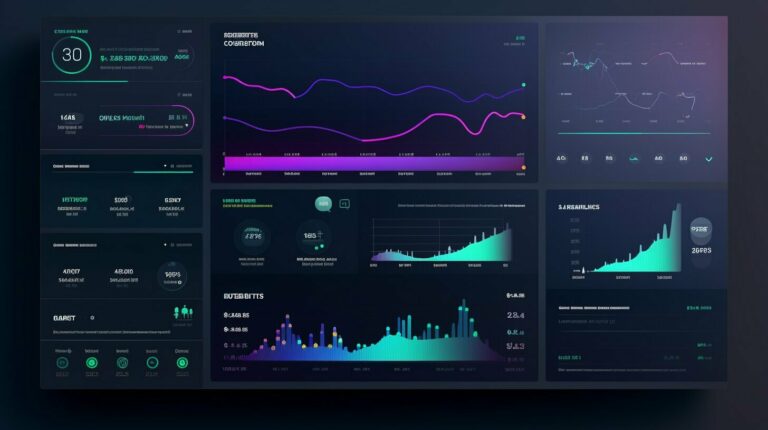Node.js has become one of the most popular platforms for building server-side applications due to its scalability, flexibility, and ease of use. One of Node.js’ key strengths is its ability to connect with various databases, making it an excellent tool for efficient data management.
Node.js database access allows developers to seamlessly integrate with MySQL databases, enabling them to perform various operations such as managing data, executing queries, and updating records. In this article, we will delve into the various aspects of Node.js database integration, covering libraries, drivers, connection setup, database operations, and security.
Key Takeaways
- Node.js database access is crucial for efficient and seamless data management.
- Node.js offers a variety of database libraries and drivers for connecting to MySQL databases.
- Setting up a MySQL database connection in Node.js involves configuring the necessary modules and implementing secure code.
- Node.js enables developers to perform various database operations such as CRUD, schema management, and complex queries.
- Optimizing Node.js database performance and security involves techniques such as connection pooling, caching, query optimization, and implementing security measures.
Understanding Node.js Database Libraries and Drivers
When it comes to connecting to a MySQL database from Node.js, developers have several options to choose from. These options come in the form of different Node.js database libraries and drivers that provide the necessary tools for seamless integration.
Node.js database libraries are collections of modules that provide an interface for communicating with a database. They help developers to abstract away the complexities of database operations, making it easier to execute queries and manage data. Some popular Node.js database libraries used for MySQL integration include Sequelize, Knex, and Bookshelf.
| Library | Description |
|---|---|
| Sequelize | A promise-based ORM (Object-Relational Mapping) for Node.js that supports multiple databases, including MySQL, Postgres, and SQLite. |
| Knex | A SQL query builder for Node.js that supports multiple databases, including MySQL, Postgres, SQLite, and Oracle. |
| Bookshelf | An ORM for Node.js based on the Knex query builder that offers a simple and flexible API for database operations. |
On the other hand, Node.js database drivers enable direct communication with the MySQL server using the MySQL protocol. They provide a lower-level interface for database operations and allow developers to execute raw queries and transactions. Some popular Node.js database drivers for MySQL include mysql2, node-mysql, and mysqljs.
| Driver | Description |
|---|---|
| mysql2 | A fast, easy-to-use MySQL driver for Node.js that supports prepared statements, transactions, and connection pooling. |
| node-mysql | A pure JavaScript MySQL driver for Node.js that offers a straightforward API for executing queries and transactions. |
| mysqljs | A lightweight, pure JavaScript MySQL driver for Node.js that provides a simple API for connecting to a MySQL database. |
When choosing between Node.js database libraries and drivers, developers should consider factors such as performance, ease of use, compatibility with their project requirements, and community support.
Setting Up a MySQL Database Connection in Node.js
Establishing a secure and reliable connection to a MySQL database is essential for efficient data management in Node.js. In this section, we will guide you through the necessary configurations and code implementation to set up a robust connection.
Before starting, make sure you have installed the required modules, including the mysql and dotenv packages. Once installed, create a .env file in your project root directory to store your database credentials securely.
Note: Never store your database credentials in code files, as they can be easily exposed and exploited. Instead, use environment variables or a configuration file.
Configuring the Database Connection
In your Node.js file, require the mysql and dotenv packages at the top of your code.
const mysql = require('mysql'); require('dotenv').config();
Then, define the database configuration object using the mysql.createConnection() function, with the credentials stored in the .env file.
const db_config = { host : process.env.DB_HOST, user : process.env.DB_USER, password : process.env.DB_PASS, database : process.env.DB_NAME }; const connection = mysql.createConnection(db_config);
The above code creates a connection to the MySQL database using the credentials stored in the .env file. Replace the placeholders (DB_HOST, DB_USER, DB_PASS, DB_NAME) with your actual database credentials.
Connecting to the Database
Once the database configuration is set up, establish the connection using the connection.connect() function.
connection.connect((err) => { if (err) { console.error('Error connecting to the database: ' + err.stack); return; } console.log('Connected to the database with ID: ' + connection.threadId); });
The above code connects to the MySQL database and logs a success message with the connection thread ID. If an error occurs during the connection, it logs an error message.
Closing the Connection
Once the database operations are completed, it is crucial to close the database connection using the connection.end() function to prevent resource leaks.
connection.end((err) => { if (err) { console.error('Error closing the database connection: ' + err.stack); return; } console.log('Database connection closed successfully.'); });
The above code closes the MySQL database connection and logs a success message. If an error occurs during the closing, it logs an error message.
By following these steps, you can set up a MySQL database connection in Node.js securely and reliably, enabling efficient data management for your projects.
Performing Database Operations with Node.js
Node.js offers a wide range of options for performing database operations, making it a popular choice among developers for efficient and seamless data management.
One of the most commonly executed operations is CRUD (Create, Read, Update, and Delete). Node.js provides several libraries and drivers that simplify the process of executing these operations on a MySQL database.
For instance, the mysql2 library provides a number of useful features like connection pooling, streaming, and prepared statements that enable developers to execute CRUD operations with ease. Similarly, the sequelize library provides ORM (Object Relational Mapping) functionalities that enable developers to interact with the database using JavaScript objects instead of raw SQL queries.
Node.js also offers support for managing database schemas using migration tools like knex.js. This enables developers to maintain a consistent database structure over different environments and versions of the application.
In addition to executing CRUD operations and managing database schemas, Node.js also allows developers to execute complex queries using features like subqueries, joins, and aggregation. These queries can be executed using libraries like node-mysql or mysql2.
In summary, Node.js offers a plethora of options for performing database operations, ranging from CRUD operations to complex queries. Its support for libraries and tools like mysql2, sequelize, and knex.js make it a popular choice for developers for efficient data management.
Enhancing Node.js Database Performance and Security
While Node.js offers an efficient and seamless way to connect to MySQL databases, there are several techniques that can be implemented to optimize its performance and security aspects. Let’s take a look at some of these techniques:
Connection Pooling
One way to enhance Node.js database performance is by implementing connection pooling. This involves maintaining a pool of reusable database connections, which can significantly reduce the overhead of generating new connections for every request. By reusing connections, the application can handle a larger number of requests without slowing down performance.
Caching
Another technique that can improve Node.js database performance is caching. This involves storing frequently used data in memory or on disk, reducing the need to query the database repeatedly for the same data. Caching can be implemented using tools like Memcached or Redis, improving the speed and responsiveness of the application.
Query Optimization
Optimizing database queries is another way to enhance Node.js database performance. This involves carefully crafting queries to minimize the amount of data returned, optimizing indexes, and avoiding subqueries or joins that can impact performance. By optimizing queries, Node.js applications can process data more efficiently and handle more requests per second.
Input Validation
Ensuring the security of Node.js database access is also critical. One way to do this is by implementing input validation to prevent SQL injection attacks. This involves validating user input and ensuring that it conforms to expected data types and values, preventing attackers from injecting malicious SQL code into database queries.
Parameterized Queries
Another technique for improving Node.js database security is by using parameterized queries. This involves using placeholders for user input in queries rather than concatenating them directly into the query string. This prevents SQL injection attacks and ensures that user input is sanitized before being used in a query.
Access Control
Implementing access control is also crucial for securing Node.js database access. This involves defining roles and permissions for users, ensuring that only authorized users can access or modify data. By enforcing access control, Node.js applications can prevent unauthorized access and data breaches.
By implementing these techniques, Node.js developers can optimize the performance and security aspects of their database access, providing faster and more secure data management for their applications.
Conclusion
Node.js database access is a crucial aspect of efficient and seamless data management. As highlighted throughout this article, connecting to MySQL databases from Node.js offers numerous benefits such as faster data retrieval, easier deployment, and flexibility for web and mobile applications.
By understanding the different Node.js database libraries and drivers available, developers can make informed choices for their projects, ensuring compatibility and optimal performance. Moreover, with a step-by-step guide on setting up a MySQL database connection in Node.js, developers can establish secure and reliable connections.
Performing database operations with Node.js is easy and intuitive, whether it be executing CRUD operations or managing schemas and executing complex queries. With the proper techniques and measures in place, such as connection pooling and security measures like input validation and access control, Node.js database access can be optimized for both performance and security.
In conclusion, Node.js database access is an indispensable tool for developers seeking efficient, scalable, and secure data management solutions. By implementing the best practices, developers can leverage the advantages of Node.js database access to create robust and high-performing applications.







